

|
| I started this site with the small camera that you can see attached to the side of the house. It's tough enough to operate in sub-zero weather, but takes lousy pictures. I've replaced it with an indoor camera on a tripod pointing out my den window at the feeders. It wouldn't do well outdoors in the winter, but it has much superior optics. The following pictures were taken with my hand-held zoom lens camera. |
| Below are some shots of wildlife taken mostly through my den window toward the bird feeders. The most recent pictures are at the top. |
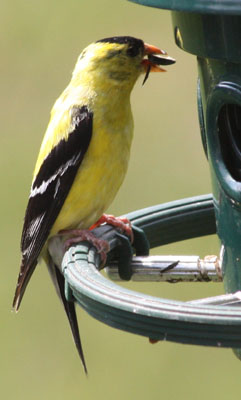
|

|
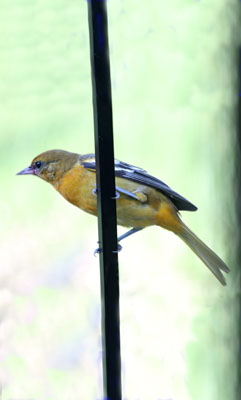
|
| Here's a male American Goldfinch (Carduelis tristis) in full summer color eating a sunflower seed. | This Turkey Vulture (Cathartes aura) was dining on something in my front yard. Unlike the Black Vulture (Coragyps atratus), the Turkey Vulture eats only carrion and does not kill for food. | The female Baltimore Oriole (Icterus galbula) is a rare sight at my feeder. |

|
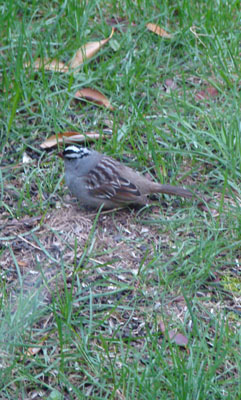
|

|
| The Blue Jay (Cyanocitta cristata) migrates south, but shows up in early May for the summer. | The White-crowned Sparrow (Zonotrichia leucophrys) is a ground feeder that arrives in early May. | A Ruby-throated Hummingbird (Archilochus colubris) first showed up at my feeders on May 11, 2008. |

|

|

|
| This Ring-billed Gull (Larus delawarensis) is probably a winter visitor. We see the larger Herring Gull (Larus argentatus) in the summer. | The Virginia Opossum (Didelphis virginiana) is a relative newcomer to the Great Lakes area. Its habitat is expanding northward, possibly due to global warming. | This little rodent is about 5" long and comes out of a hole in the snow. From the feedback I've received, it might be either a Meadow Vole (Microtus pennsylvanicus) or Southern Bog Lemming (Synaptomys cooperi). |

|
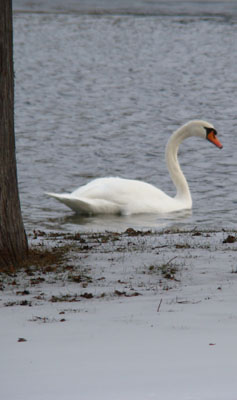
|

|
| The Mallard (Anas platyrhynchos) is one of the most common of our water birds. | The Mute Swan (Cygnus olor) is the national bird of Denmark, but is non-native to Michigan and has been accused of overgrazing the habitat of native birds. As we know, they also appropriate loons' nests and attack jet skis. | The Common Goldeneye (Bucephala clangula) is another winter visitor. |
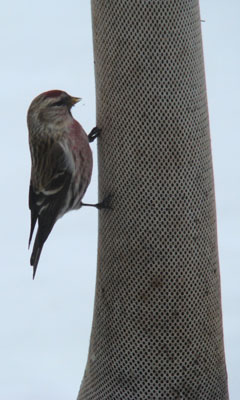
|

|
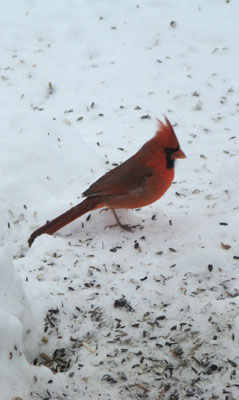
|
| The Common Redpoll (Carduelis flammea) is another cousin of the Pine Siskin (Carduelis pinus) and the American Goldfinch (Carduelis tristis). | This Eastern Cottontail (Sylvilagus floridanus) came for sunflower seeds just before sunset. According to Wikipedia, it is active at night and does not hibernate. | Male Northern Cardinal (Cardinalis cardinalis) |
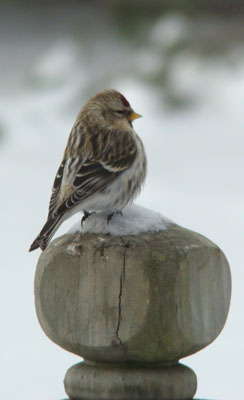
|

|
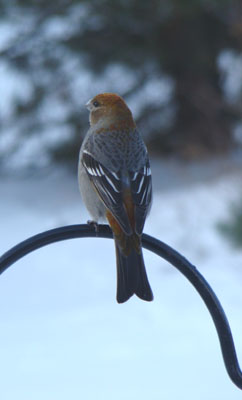
|
| The Pine Siskin (Carduelis pinus) is a cousin of the American Goldfinch (Carduelis tristis). | Everyone, including this White-tailed Deer (Odocoileus virginianus), likes sunflower seeds. | Pine Grosbeak (Pinicola enucleator) |
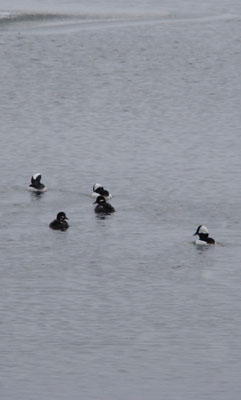
|

|
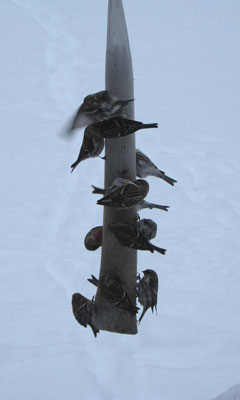
|
| Buffleheads (Bucephala albeola) settle near the bridge for the winter and head north in spring. | This American red squirrel (Tamiasciurus hudsonicus) spends a lot of time on the deck post trying to figure out how to get to my sunflower seed feeders. He still gets plenty to eat on the ground. | The Pine Siskins (pictured) and American Goldfinches are the only birds that seem to prefer thistle over sunflower seeds. |